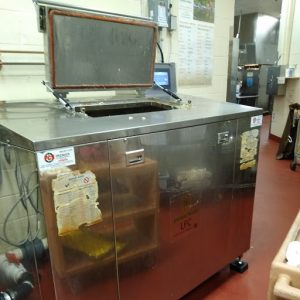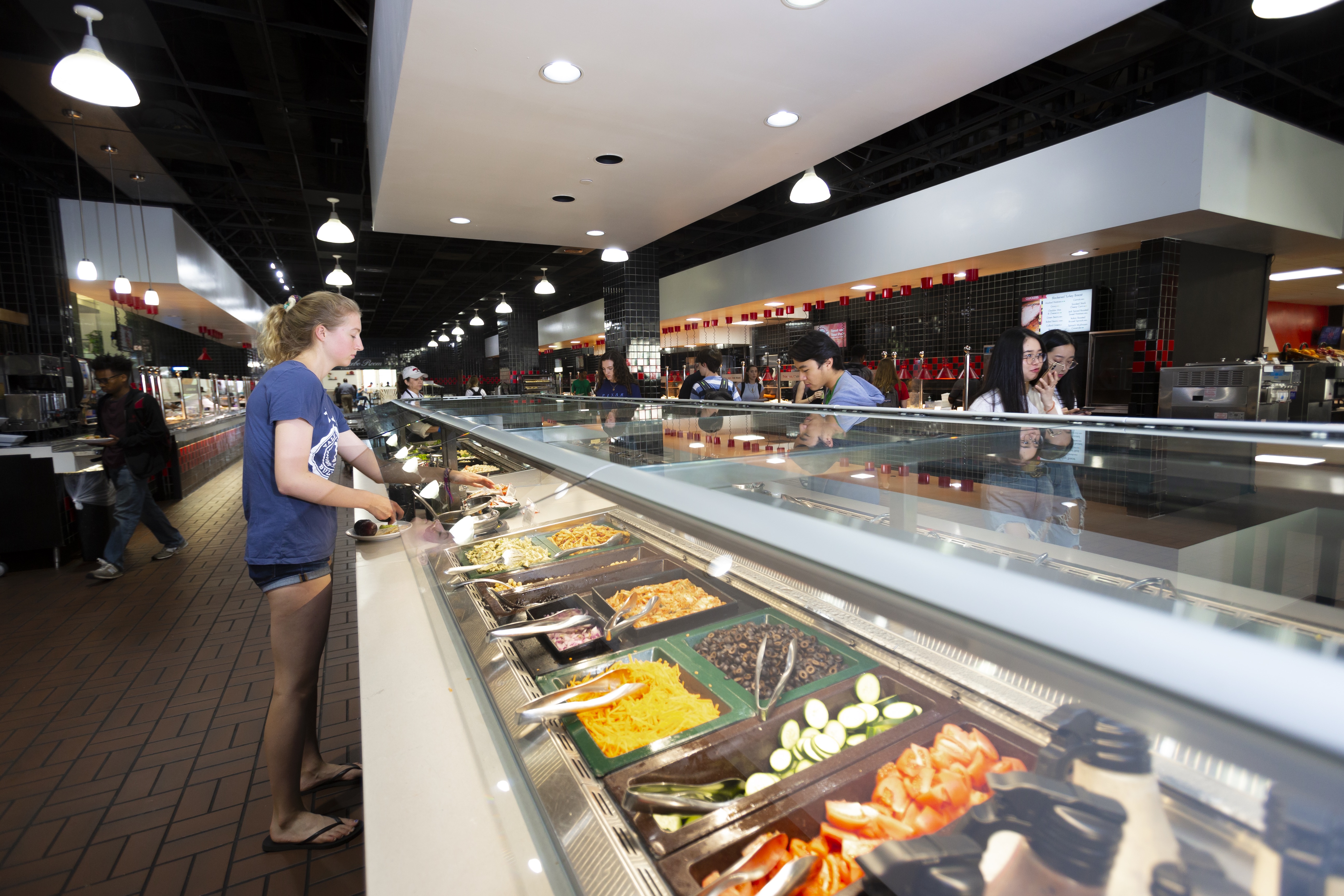University of Maryland has become the first university to join the Cool Food Pledge, an initiative that requires organizations to reduce their food-related greenhouse gas emissions by 25% by 2030. The university announced on August 26 that they would cut down these greenhouse gases by changing the ways in which the Department of Dining Services sources, handles and serves food.
“There will be an evolution of our menu, but it’s not going to be dramatic,” said Allison Tjaden, assistant director for new initiatives at Dining Services. “That’s really important for us because we have a big group of people working, studying and living with us on campus, so we have to make sure we have food that everybody likes, but we do want to offer food on campus that is both good for us and good for the planet.”
The Cool Food Pledge, developed by the World Resources Institute, hosted their inaugural celebration for the initiative on Sept. 24 in New York. Along with the university, signatories include Morgan Stanley, WeWork and Hilton, among others.
According to Tjaden, the process will be a 10-year commitment. The first step, she said, is understanding the current food-purchasing baseline, so that dining services can create a plan to meet that 25% reduction over time.
This isn’t the first time the university has participated in sustainable dining initiatives. In 2012, dining services launched an initiative aimed to source 20% of the food served from sustainable vendors by 2020. Food providers must fit into one of four categories to be considered a sustainable source; the food must be grown or raised within 250 miles of campus, providers must participate in humane animal practices, fair trade practices or ecologically sound practices. According to Tjaden, the university reached 28% sustainable food purchases as of 2018 and has “far exceeded our goal.”
Some of this local food is sourced from Terp Farm, located in Upper Marlboro. In 2018, Dining Services sourced 11,434 pounds of food from the farm, including produce such as jalapeños, spaghetti squash, eggplants, banana peppers and more. The majority of the dining hall food, however, is sourced from food providers U.S. Foods and Keany Produce.
Before the fall of 2016, the dining halls, which serve about 27,000 meals per day, operated under a retail dining style, where students could buy food with dining points and take out food using carry out containers. The switch in the fall of 2016 to anytime dining, an “all you can eat”-style dining where students paid a flat rate for the semester, restricted students from taking food to-go. According to dining services, the switch helped propel sustainability initiatives further towards the university’s green goals.
Compost collection increased by 48% when dining services made the switch. Recycling efforts increased by 20% and eliminated approximately 6.3 million disposable items, including the carry-out containers, disposable cups, plastic straws and plates. Recovered food, which is essentially food waste that is diverted from landfills, increased by approximately 97% from spring 2016 to fall 2016, according to data from the Food Recovery Network.
The University of Maryland, both the College Park and Eastern Shore campuses, as well as Salisbury University — which serves between 4,000 and 4,500 meals per day during the week — are the only universities in Maryland that are self-operated, meaning they aren’t run by third-party vendors.
“That doesn’t really mean [other universities] don’t have sustainability practices, but it does shift how that is decided,” said Tjaden. “It has to be decided a little bit more at a corporate level and not on a campus-level.”
Although Salisbury University doesn’t specifically aim to make 20% sustainable food purchases, the university does try to order locally through both of their food providers.
“When we are ordering things from [our food provider], we try to look for local [food],” said Susan Noah, assistant director of Commons Dining at Salisbury University. “We also order from Keany Produce…they send out a list every week that has all of the local produce that’s available.”
Salisbury sources a small portion of their food from a garden on campus, run by the university’s Gardening Club. Like the University of Maryland, the rest of the dining hall food — the bulk of it — comes from third party vendors Keany Produce and Sysco.
The fall of 2016 also brought changes for Salisbury in terms of food waste management.
“Unfortunately, there’s no local composting facilities here in Maryland [that are close],” said Noah. “So what that would mean for us is that we’d have to take all our food waste and put it on a truck and actually have it shipped all the way up to New Jersey, which is really defeating the purpose.”
Instead, Salisbury dining services decided to take matters into their own hands by implementing large, on-site “food digesters,” which have a smaller impact on the environment.

“These digesters have enzymes and bacteria that will actually break down the food waste and go out within the waste water,” said Noah.
The food digesters, supplied by the company Power Knot, diverted 50 tons of food waste from landfills and reduced the amount of carbon dioxide emitted by 97.4 metric tons this year. That’s equivalent to a car that has travelled over 241,000 miles.
Food travels 1,500 to 2,500 miles before it reaches one’s plate, according to Worldwatch Institute. This produces between 606 and 1010 kilograms of carbon dioxide per trip. And when food scraps are thrown away instead of composted, transportation from households to landfills amount to $1.3 billion annually. Only 5% of these food scraps are properly recycled and when they’re not, they release large amounts of methane into the atmosphere.
Dining services at the University of Maryland plans to increase communications about the Cool Food Pledge with the campus community. This includes featured posters and table displays about sustainable food options in dining halls and other locations on campus as well as sharing information about sustainable initiatives on their social media platforms.
Tjaden also hosts dietetic interns from the Department of Nutrition and Food Science for two weeks during their year-long internship program and obtains feedback on how to communicate sustainable initiatives to students across campus.
“[Dining services is] generating a lot of ideas at this point about how people can get more involved,” said Tjaden, “The first year of this initiative is really going to be about trying to cast a wide net for people to contribute their ideas about how we get the word out and how we engage people in this process.”


You must be logged in to post a comment.